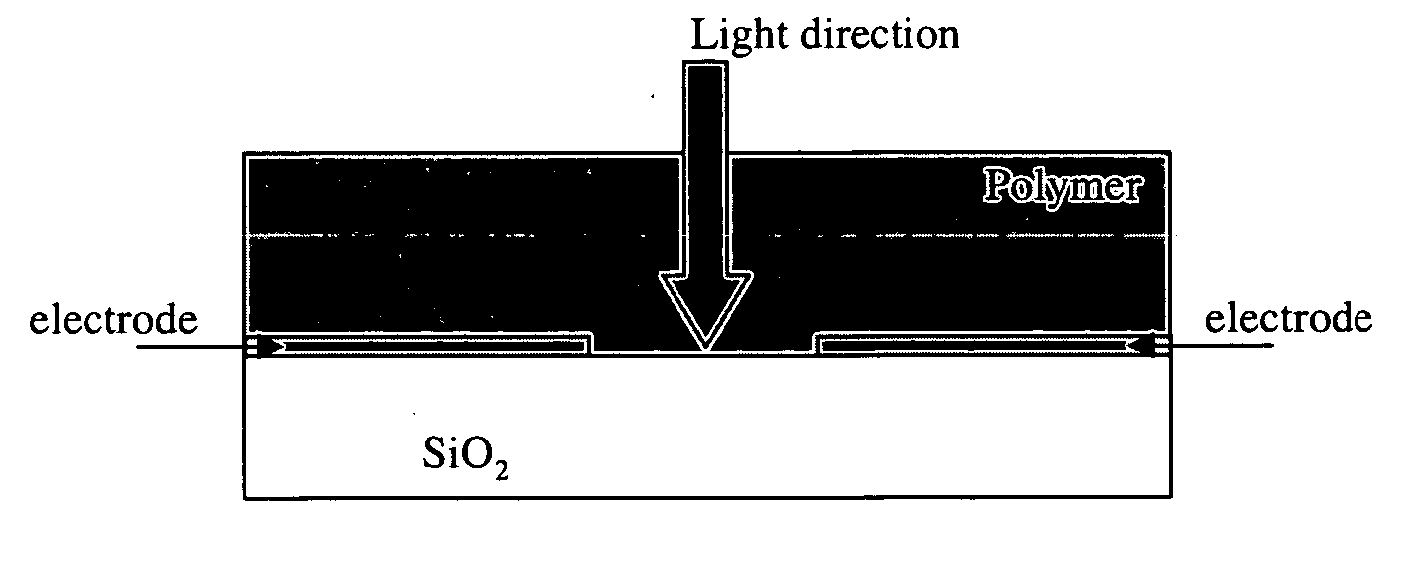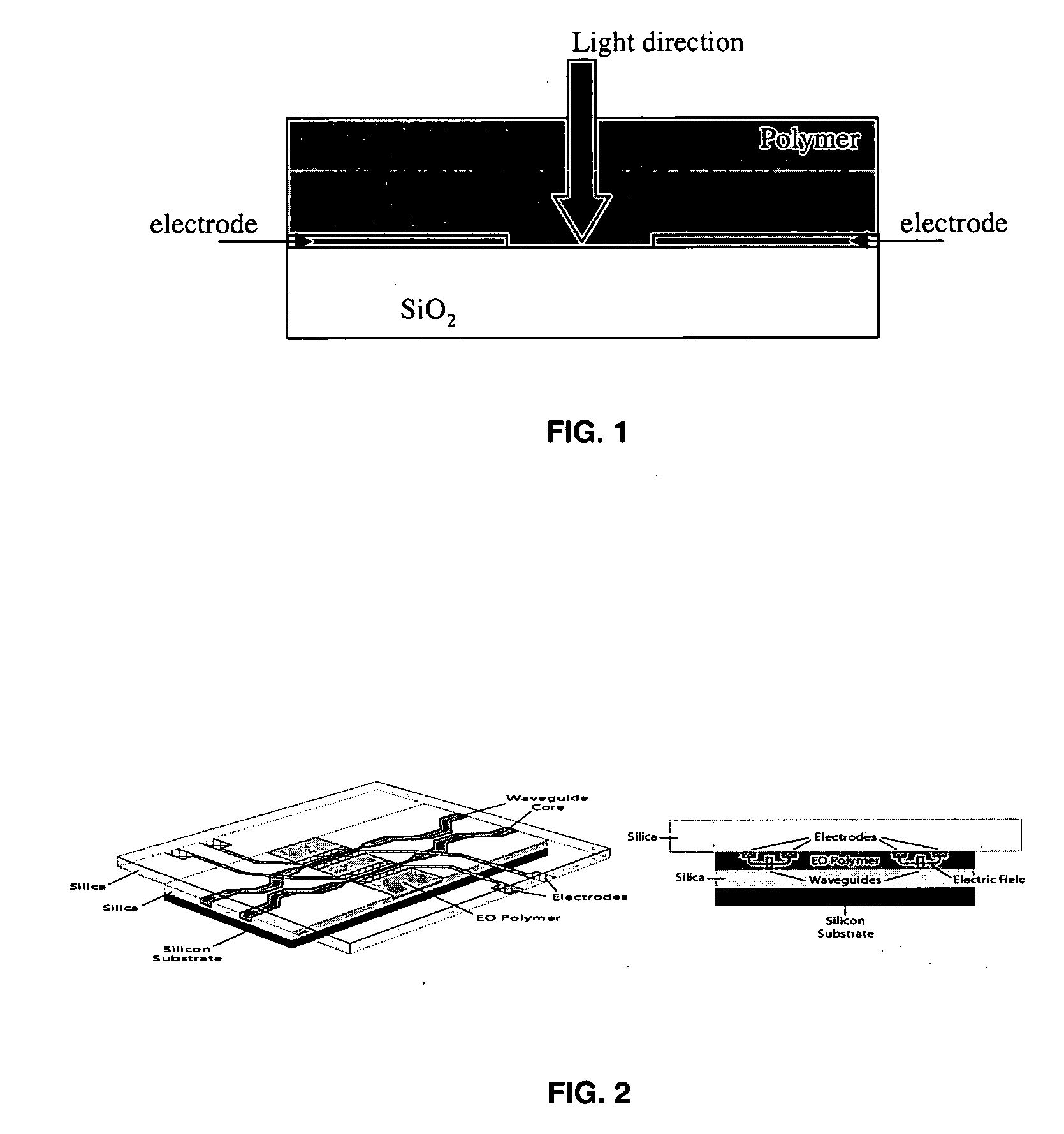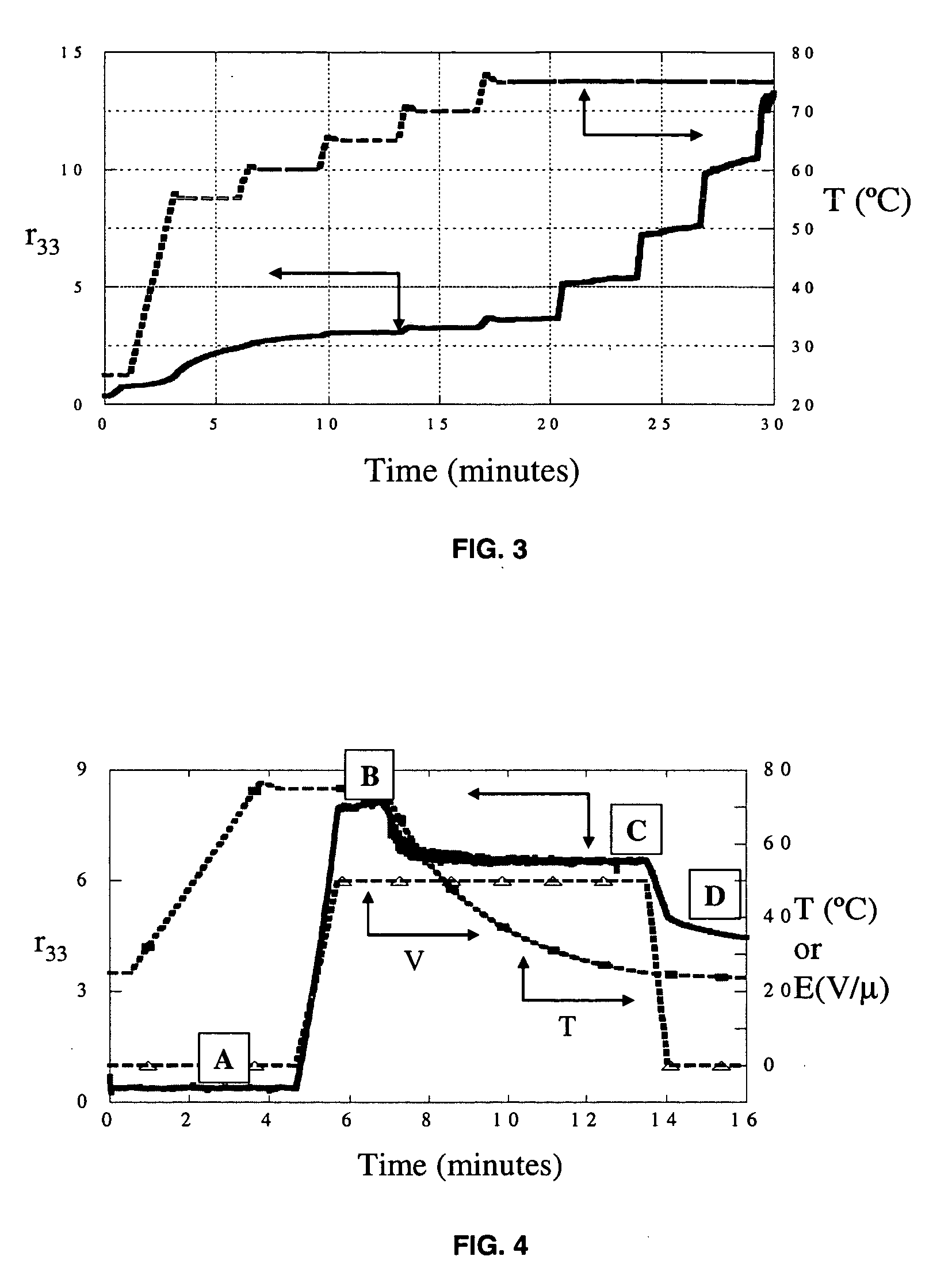Electrooptic chromophores with large optical birefringence for applications at high speed and short wavelengths
- Summary
- Abstract
- Description
- Claims
- Application Information
AI Technical Summary
Benefits of technology
Problems solved by technology
Method used
Image
Examples
example 1
Properties of Small Chromophores
[0063] In this example, several prototypical small chromophores, along with their calculated (and measured if available) properties are presented. The values are given in Table 9. The values of μ and μβ for the experimental PFOM are taken from L.-T. Cheng, et. al., J. Phys. Chem. 95, pp. 10631 (1991). The calculated results were obtained using JAGUAR, as described above.
TABLE 9Properties of Small Chromophoresexpt.calc.MoleculeAbbreviationMWλ maxFOMcalc. μβFOMo2,5 bis-trifluoromethyl aniline2,5-BTFMA229.122.950.0134 trifluoromethyl aniline4-TFMA161.137.880.0493,5 bis-trifluoromethyl aniline3,5-BTFMA229.126.580.029nitrobenzeneNB123.11˜260 nm 0.0633.780.031α,α,α trifluorotolueneAAATFT146.113.770.026N,N, dimethyl 4 nitro analineDMNA166.18407 nm0.44870.570.4254-(dimethylamino)benzonitrile4DMABN146.19 290 nm*0.19247.850.3274-(dimethylamino)-2,2,2-trifluoroacetophenone4DMATFAP189.14 356 nm*0.31276.080.4023 methyl 4amine nitrobenzene3M4ANB152.150.35454.31...
example 2
EO Properties of Standard Chromophore / Polymer Blend (178-086-02)
[0064] In this example we present the EO response of a standard OPI chromophore, VC8 (p-diethylamino-phenyl-hexa-1,2,7-triene,1-pentafluoro, 2,2-dicyanoethylene), in a partially fluorinated polymer, CP087 at 8.49 wt-%. The first EO trace, shown in FIG. 3, measures the response of the chromophore at 1 kHz to changes in temperature and voltage, using a 1550 nm laser as the optical source. The temperature and voltage profile used for this result will be referred to as Profile1 in the subsequent examples.
[0065] Profile1 begins with the EO cell held at room temperature. A DC bias of 25V / μm (500 V) is placed across the two electrodes in addition to the 200 V peak-to-peak AC voltage. The temperature is then quickly ramped to 55° C., held constant for approximately three minutes, then ramped to 60° C. This process continues until the sample reaches a temperature of 75° C. After approximately 3 minutes at this temperature and ...
example 3
EO Properties of Fast-Response EO Material (178-090-25)
[0076] In this example, we present the EO response of a prototypical fast-response chromophore, 4A2TFMBN (4-amino, 2-trifluoromethyl benzonitrile), in a partially fluorinated polymer, CP087 at 21.6 wt-%. The solution was also coated onto a prism for a refractive index measurement. The value of the index was measured to be 1.465 at room temperature and 1550 nm. The response of the chromophore at 1 kHz using EO Profile1 is shown in Table 12, using a 405 nm laser as the optical source. Here we see that the response is large at room temperature, which will complicate analysis of the results using EO Profile2.
TABLE 12Summary of the EO response of a prototypicalfast-response EO chromophoreTemperatureBias fieldEO25 C.25 V / μm12.0 pm / V29 C.25 V / μm13.9 pm / V29 C.35 V / μm18.2 pm / V
[0077] The EO response of this material is shown in FIG. 5. Because of the large response of the material at room temperature, the sample is never heated, but th...
PUM
| Property | Measurement | Unit |
|---|---|---|
| Fraction | aaaaa | aaaaa |
| Nanoscale particle size | aaaaa | aaaaa |
| Nanoscale particle size | aaaaa | aaaaa |
Abstract
Description
Claims
Application Information
 Login to View More
Login to View More - R&D
- Intellectual Property
- Life Sciences
- Materials
- Tech Scout
- Unparalleled Data Quality
- Higher Quality Content
- 60% Fewer Hallucinations
Browse by: Latest US Patents, China's latest patents, Technical Efficacy Thesaurus, Application Domain, Technology Topic, Popular Technical Reports.
© 2025 PatSnap. All rights reserved.Legal|Privacy policy|Modern Slavery Act Transparency Statement|Sitemap|About US| Contact US: help@patsnap.com



